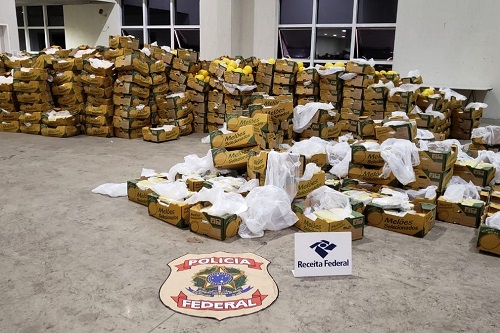Ldn photo
By
Ricardo Swire
Brazilian law enforcement assigned to the country’s most eastern port made local history with a single drug seizure of 3.3 metric tons of cocaine. In February 2019 the multi-million dollar consignment was intercepted, hidden in shipping containers of fruit, at Port of Natal Rio Grande do Norte, Brazil. The cocaine was destined for 3198 LK Europoort Rotterdam, Netherlands.
In the first four months of 2019 Brazilian counternarcotics agents found seven tons of cocaine transiting Port of Natal, more than half of the cocaine intercepted at Brazil’s largest facility Port of Santos for 2018. One interception seized nine hundred and ninety-eight cocaine packages. The next day one thousand eight hundred and thirty-two parcels of the drug were stopped. The cocaine was hidden in containers loaded with boxes of melons or mangoes.
Brazilian Federal Police intelligence reports identified Potiguar, Rio Grande do Norte’s capital, as start point of one international drugs trafficking corridor. Transnational drug trafficking syndicate’s drug mules travel this route aboard commercial airline flights. Contracted maritime resources move Bolivian, Colombian and Peruvian product from Brazil’s closest geographical point to Europe. Traffickers capitalize on Port of Natal’s, or largest port in Europe, lack of adequate container scanner technology to be successful at their trade.
Logistics specialists mark consignments with coloured stickers to indentify which trafficking network dispatched individual cocaine shipments. In December 2018 members of the International Criminal Police Organization (INTERPOL) dismantled a splinter of Italy’s Ndrangheta Mafia that trafficked two hundred kilo cocaine loads from Brazil, Colombia and Guyana to Ports of Rotherdam and Antwerp in Europe.
Ricardo Swire
Ricardo Swire is the Principal Consultant at R-L-H Security Consultants & Business Support Services and writes on a number of important issues.



No Comments Yet!
You can be first to comment this post!